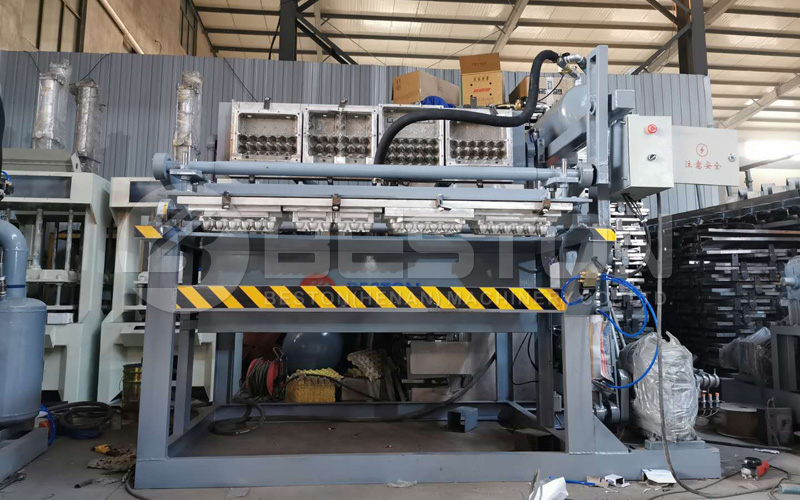
Proper maintenance of an egg tray machine is essential for ensuring consistent performance, reducing operational costs, and prolonging its lifespan. Regular upkeep prevents unexpected breakdowns, minimizes downtime, and enhances production efficiency. Businesses that follow structured maintenance protocols will find it easier to protect their investment while optimizing output quality.
Regular Cleaning and Inspection
Routine cleaning plays a pivotal role in keeping an egg tray machine in optimal condition. Accumulated pulp residue, dust, or debris can cause blockages and lead to mechanical inefficiencies. It is crucial to clean critical components, such as the pulp tank, pipelines, and molds, at the end of each production cycle.
Additionally, perform frequent inspections to identify wear and tear in parts like bearings, belts, and hydraulic systems. Early detection of minor issues prevents further damage and costly repairs. Regular visual checks ensure the machine runs smoothly and eliminates the risk of unplanned stoppages.
Lubrication of Moving Parts
The longevity of any machinery depends significantly on proper lubrication. Egg tray machines include numerous moving parts, such as motors, gears, and shafts, which require consistent lubrication to reduce friction. Use high-quality lubricants as recommended by the manufacturer to prevent overheating and excessive wear.
Schedule periodic lubrication for:
- Gear assemblies
- Hydraulic pumps
- Bearings and rotating shafts
Over-lubrication, however, can attract dust and debris. Therefore, follow the precise intervals and quantities specified in the machine manual.
Mold Maintenance and Care
The mold is one of the most vital components of an egg crate making machine, as it determines the shape and quality of the final product. Over time, molds can accumulate residue or suffer from corrosion, particularly when working with water-based pulp. To maintain molds:
- Clean them regularly using non-abrasive tools to avoid damage.
- Inspect for cracks, corrosion, or wear and replace worn-out molds promptly.
- Apply anti-corrosion treatments where applicable to prolong their service life.
Ensuring mold cleanliness directly enhances product quality and minimizes rejects.
Monitor the Drying System
For machines integrated with drying systems, it is important to monitor performance routinely. Drying inefficiencies can lead to under-dried trays, increased energy consumption, and production delays. Key actions include:
- Ensuring that temperature control systems function accurately.
- Checking conveyor belts for alignment, cleanliness, and smooth operation.
- Maintaining proper ventilation in drying chambers to avoid overheating or uneven drying.
Energy-efficient systems reduce operational costs, making regular inspections critical for maintaining efficiency.
Optimize Hydraulic and Electrical Systems
Both hydraulic and electrical systems are fundamental to an egg tray machine’s operation. Hydraulic pumps must operate under consistent pressure, while electrical connections need to be free from faults. Steps to optimize these systems include:
- Hydraulics: Regularly check for leaks, abnormal noises, or inconsistent pressure levels. Replace hydraulic fluid as recommended.
- Electrical: Inspect wiring for damage, clean control panels, and ensure all sensors and switches function correctly.
Prompt replacement of faulty components prevents larger issues and ensures uninterrupted production. Below is an egg tray making machine video.
Calibrate for Optimal Performance
To achieve peak efficiency, calibrate the machine at regular intervals. Misalignment in mold movement, pulp flow, or drying temperature can reduce production quality and increase energy usage. Follow these best practices:
- Verify the accuracy of programmable settings and controls.
- Adjust mold alignment and pulp pressure to ensure uniform tray thickness.
- Test machine performance after calibration to validate output quality.
Budget for Spare Parts and Repairs
Preventive maintenance includes planning for necessary part replacements. Components such as molds, filters, and bearings are subject to wear and will need periodic replacement. Considering the paper moulding machine price and production volume, budgeting for high-quality spare parts reduces long-term costs and avoids disruptions.
When evaluating the paper egg tray making machine price, factor in maintenance costs and access to spare parts. Machines supported by reliable after-sales services and warranties deliver superior value over time.
Conclusion
Maximizing the lifespan of an egg tray machine requires diligent maintenance and strategic care. Regular cleaning, lubrication, mold upkeep, and system monitoring minimize operational downtime while enhancing efficiency. By investing time and resources into preventive maintenance, businesses can safeguard their equipment, ensure optimal performance, and extend the machine’s service life.

